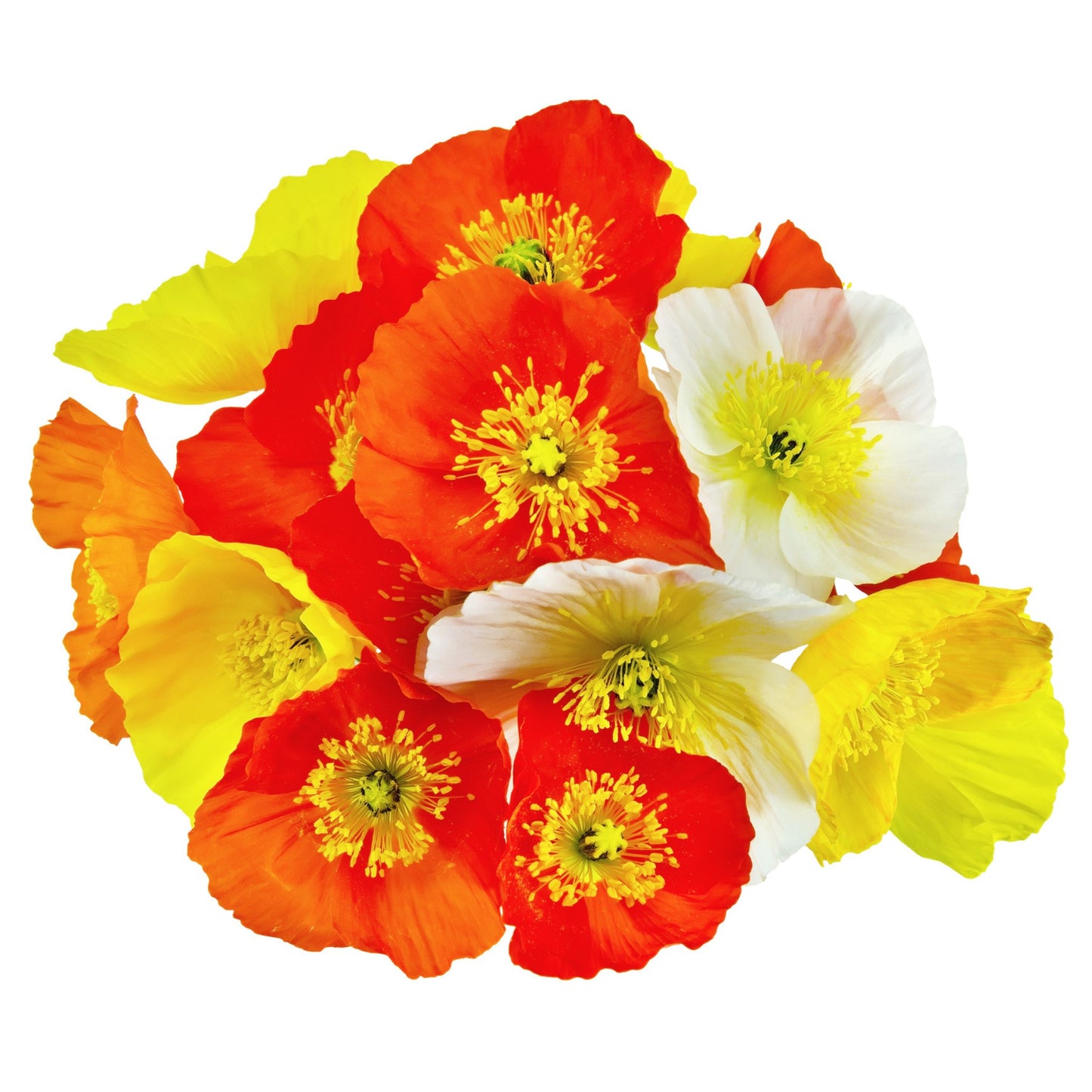Jonquil
Poppy Artist Glory Mixed - 0.1 Gram
Poppy Artist Glory Mixed - 0.1 Gram
Couldn't load pickup availability
Poppy 'Artist Glory Mixed' (Icelandic Poppy - Papaver rhoeas or Papaver somniferum, depending on the variety) is a stunning, multi-coloured annual poppy variety that produces large, delicate blooms in a blend of red, pink, white, purple, and bi-coloured shades. Each flower features papery, crinkled petals that create a soft, romantic appearance, with some varieties having ruffled or fringed edges.
These poppies grow to a height of 40–70 cm with a spread of 20–30 cm, making them perfect for wildflower meadows, cottage gardens, borders, and pollinator-friendly spaces. They are low-maintenance, self-seeding, and drought-tolerant once established.
Poppies are also excellent pollinator attractors, bringing in bees, butterflies, and beneficial insects while adding a spectacular splash of colour to the garden.
Growing Guide
Soil Requirements
Prefers well-drained, light, and moderately fertile soil.
Can tolerate poor, sandy, or rocky soil, but avoid heavy, waterlogged soil.
Ideal soil pH: 6.0–7.5 (neutral to slightly acidic).
Avoid adding too much fertilizer, as rich soil reduces flowering.
Sunlight & Location
Requires full sun (6–8 hours per day) for best flowering.
Can tolerate partial shade, but this may lead to weaker stems and fewer blooms.
Best suited for wildflower meadows, cottage gardens, borders, and naturalized areas.
Planting & Germination
Starting from Seeds (Direct Sowing Recommended)
Best Time to Sow:
Autumn sowing (preferred): Late autumn (September–November) for early blooms the following year.
Spring sowing: Sow in March–May for flowers in summer.
Direct Sowing (Preferred Method):
Scatter seeds on the soil surface—do not bury them, as they need light to germinate.
Lightly press seeds into the soil for good contact.
Keep soil evenly moist but not waterlogged.
Spacing: Thin seedlings to 20–30 cm apart once they are about 5 cm tall.
Germination Time: 7–14 days at temperatures around 15–20°C.
Watering
Water lightly and regularly during germination and early growth.
Once established, poppies are drought-tolerant and require minimal watering.
Overwatering can lead to root rot and weak, floppy stems.
Fertilization
Poppies do not require fertilization in most soils.
If grown in very poor soil, a light application of compost or a low-nitrogen fertilizer (5-10-10) may be added before sowing.
Avoid high-nitrogen fertilizers, as they encourage excess foliage instead of flowers.
Maintenance & Pruning
Deadhead spent flowers to extend the blooming period.
Allow some flowers to go to seed if you want natural reseeding for next year.
If plants become leggy, trim back slightly to encourage stronger growth.
Pest & Disease Control
Generally pest-resistant, but may occasionally attract aphids. Use insecticidal soap if needed.
Slugs & snails may feed on young seedlings—use organic deterrents if necessary.
Diseases:
Avoid overcrowding to prevent powdery mildew and root rot.
Ensure good air circulation and avoid overhead watering.
Companion Planting
Best Companion Plants:
Cornflowers, daisies, lavender, and foxgloves for a colourful wildflower display.
Vegetables: Poppies attract pollinators, making them beneficial near tomatoes, beans, and cucumbers.
Avoid planting in overly fertile gardens, as they prefer leaner soils.
Harvesting & Uses
Cut Flowers:
Harvest blooms in the early morning when they are just opening.
Sear the stem ends with a flame for longer vase life.
Seed Collection:
Allow seed pods to dry on the plant, then collect and shake seeds over prepared soil.
Store seeds in a cool, dry place for next season.
Key Benefits of Growing 'Artist Glory Mixed' Poppies
Vibrant mix of red, pink, purple, and white blooms for a dynamic garden display.
Drought-tolerant & low maintenance, perfect for beginner gardeners.
Self-seeding, ensuring continuous blooms in future years.
Attracts pollinators like bees and butterflies.
Ideal for cottage gardens, wildflower meadows, and borders.
Would you like tips on growing poppies in containers or maximizing their self-seeding?
Share


